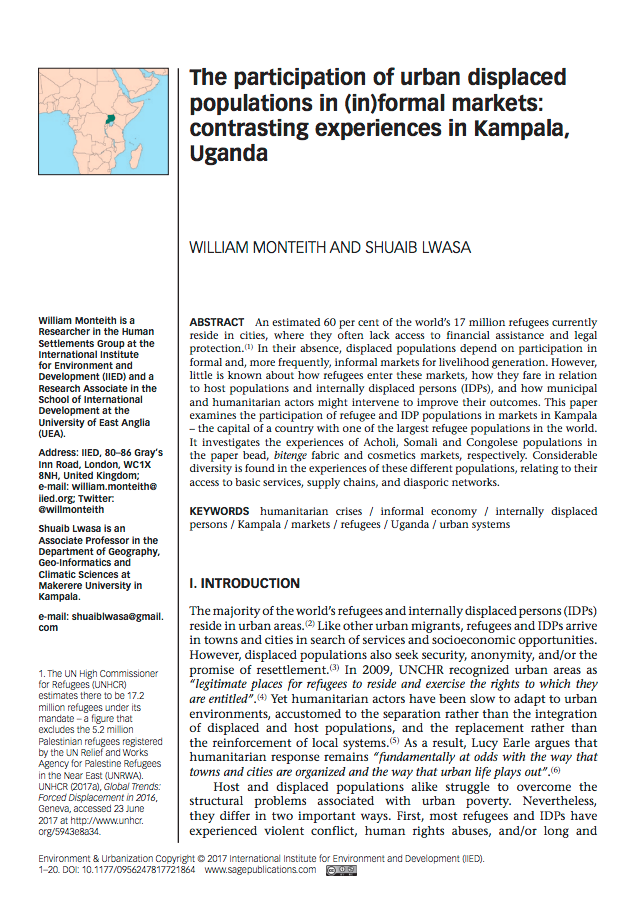Resource information
An estimated 60 per cent of the world’s 17 million refugees currently reside in cities, where they often lack access to financial assistance and legal protection.(1) In their absence, displaced populations depend on participation in formal and, more frequently, informal markets for livelihood generation. However, little is known about how refugees enter these markets, how they fare in relation to host populations and internally displaced persons (IDPs), and how municipal and humanitarian actors might intervene to improve their outcomes. This paper examines the participation of refugee and IDP populations in markets in Kampala – the capital of a country with one of the largest refugee populations in the world. It investigates the experiences of Acholi, Somali and Congolese populations in the paper bead, bitenge fabric and cosmetics markets, respectively. Considerable diversity is found in the experiences of these different populations, relating to their access to basic services, supply chains, and diasporic networks.



